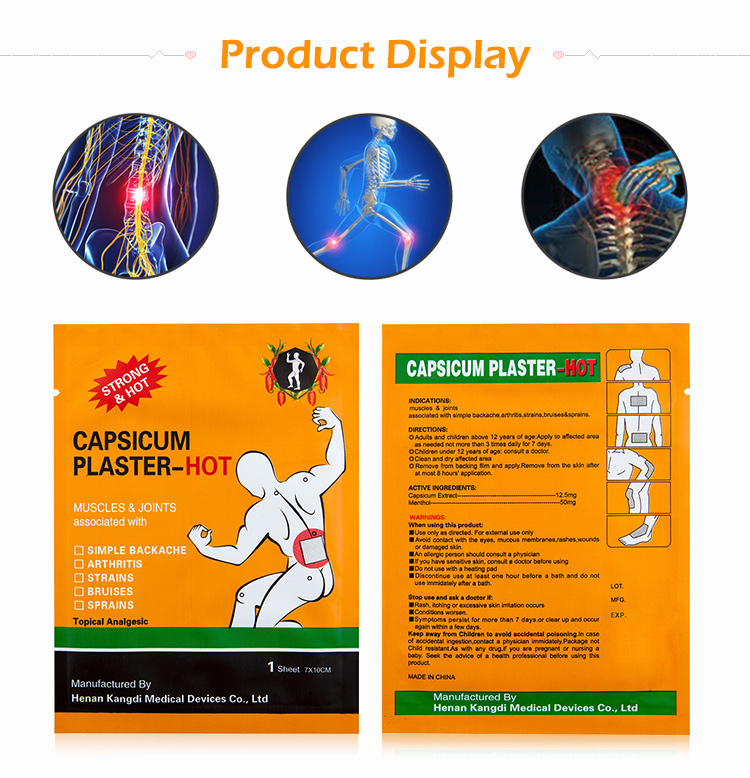Author:Kangdi 12-12-2023
Capsicum plaster, also known as capsaicin or chili pepper patches/creams, utilize the active compound capsaicin found in hot peppers. This topical treatment offers therapeutic pain relief and anti-inflammatory benefits thanks to capsaicin's effects on the peripheral nervous system. However, as an external bioactive substance, capsicum also carries contraindications for some users, as well as potential side effects with misuse.
01. Who Should Avoid Capsaicin Plaster
While generally very safe, capsaicin is not suitable for everyone. Individuals with these conditions should abstain:
Broken skin, wounds, or burns – Capsaicin heavily stimulates exposed/damaged skin which increases pain. Avoid use on irritated areas.
Eczema, psoriasis and dermatitis – The warming mechanism may aggravate sensitive skin disorders. Only apply to unaffected skin.
Facial areas – Capsaicin near mucous membranes (eyes, mouth, nose) causes severe burning. Keep away from the face and sensitive regions.
Pregnancy/breastfeeding – The effects on developing babies is uncertain. Avoid unless a doctor consents.
Children under 2 years old – Too much peripheral stimulation from capsaicin may be unsafe for very young children. Do not use without medical supervision.
02. Possible Side Effects
For most adults, capsicum plaster and ointments are well tolerated when following all package directions. However improper use may result in side effects like:
Skin irritation – Allergic reaction or overwhelmed heat receptors. Remove product and wash skin if rash, blistering or increased discomfort occurs.
Minor burns – Results from bandaging too tightly, applying too much, not removing promptly after prescribed time. Treat mild burns with aloe vera and protect blisters from infection.
Lightheadedness upon standing – Due to widened blood vessels, low blood pressure is possible. Sit/lie down and remove product if symptoms arise. Seek emergency help for severe hypotension.
Using capsaicin cream is very straightforward but taking shortcuts invites problems. Adhering strictly to enclosed instructions minimizes risks substantially. Consult a pharmacist or doctor about any other medications/supplements taken concurrently to identify possible interactions. Finally, immediately report any serious issues and cease usage unless advised otherwise by a healthcare professional.
The convenient analgesic abilities of capsicum plaster or gel makes it an understandable go-to for many pain sufferers. However its natural heat production mechanism requires wise precautions to remain safe. By avoiding capsicum with contraindicating circumstances and conditions, while staying mindful of potential side effects, consumers can harness the warming relief responsibly.
 0086 19937104978
0086 19937104978





